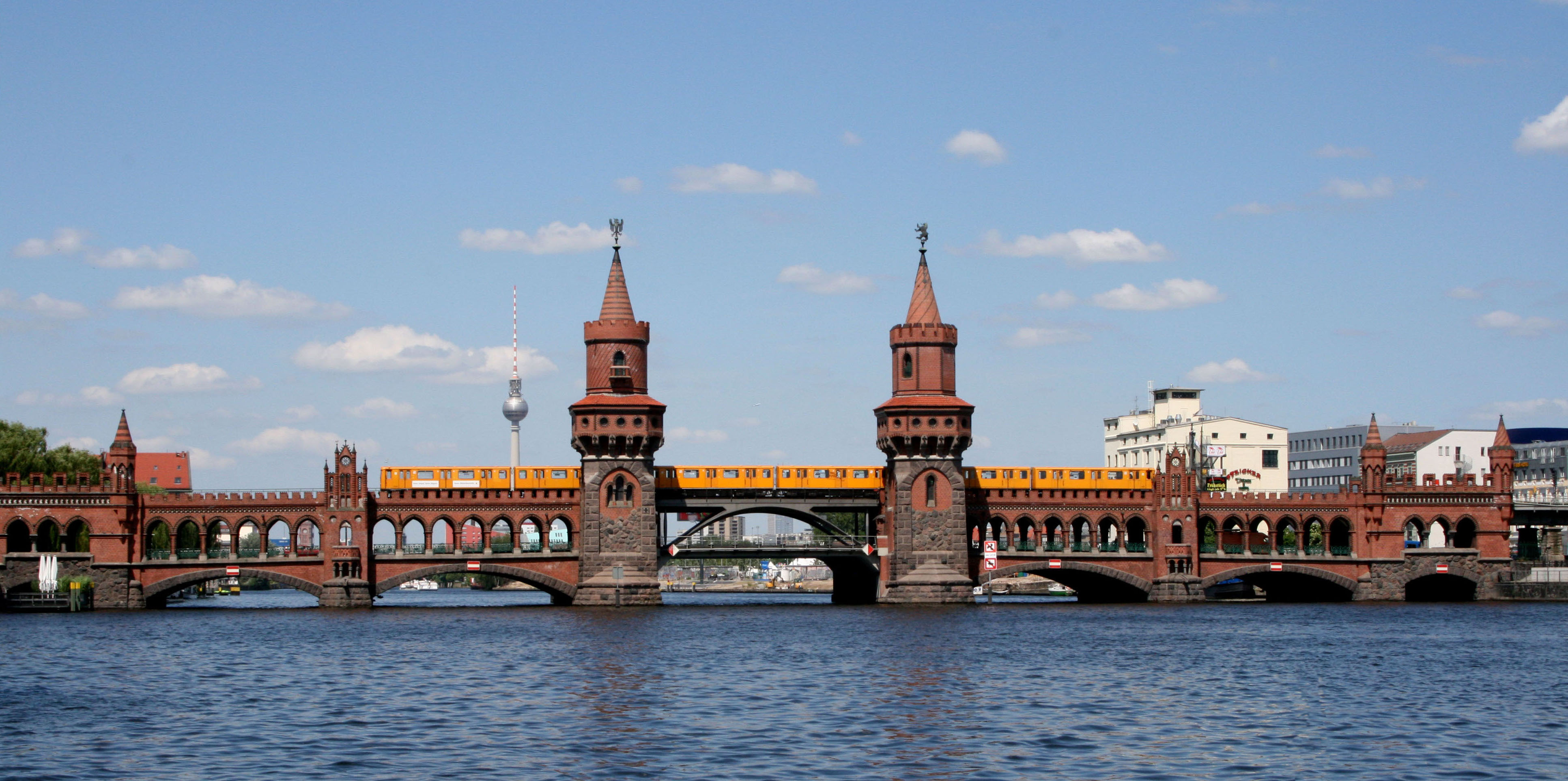 |
| Oberbaumbrücke, by Sarah Jane at Flickr (Flickr) [CC BY 2.0 (http://creativecommons.org/licenses/by/2.0)], via Wikimedia Commons |
What first came to my mind was the Oberbaumbrücke and the Glienicker Brücke, both important in Berlin´s history though with a quiet different past. There are actually around 2100 bridges in Berlin and I will just give a personal overview about some of them which I believe are very interesting. I will also recommend visits in some cases :)
By the way, the number of bridges is much higher than i.e. in Venice: There you just find 410 bridges. See the link (in German): http://www.zeit.de/2002/34/200234_stimmts_bruecken.xml
So let´s start with the Oberbaumbrücke (Oberbaum bridge) or, to be more exact, with its related history..
For that I go back to medieval Berlin. Back then the city actually consisted of two originally independent settlements - Berlin and Cölln - which had agreed to unite and to have a common administration together. These two were placed opposite to each other on the banks of the river Spree and were enclosed by a common city wall with water ditches. Probably having been a wooden palisade in the beginning, it was first changed to a stone wall consisting of fieldstones and was reinforced by bricks during the 13. century. There were only two big gaps inside these walls, marked by the river Spree: One at its entry point at the southeast end of the so called Spreeinsel and one at its leaving point in the northwest of the city about where the Rathausbrücke of today is situated*. Making sure that there was no ship entering or leaving without having paid the tolls, these two places were fortified by oak piles in the river Spree just leaving narrow passages. Each of the two passages could be closed by a tree trunk ( 'tree' equals the German word 'Baum'). This trunk was called 'Oberbaum' ( equals 'upper tree') at the Spree´s entry point and 'Unterbaum' ('lower tree') at its northwestern leaving point. Due to the extension of the city and the construction of the so called 'Zollmauer' (= 'toll wall') from 1735 onwards, the river´s entry point to the city and with it the 'Oberbaum' as well became the area between Schlesisches and Stralauer Tor far more east to the city center and now the location of the Oberbaum Bridge of today. So that´s how the Oberbaumbrücke got its name.
The first Oberbaum bridge at this place was wooden. Construction for the bridge of today was started in the late 19th century and the magistrate of Berlin and the city council members wanted a representative 'gate' to the city. Furthermore a high line of the Berlin U-Bahn crossing the Spree at this place was supposed to be integrated in the planning. The outcome was a bridge with much reference to the history of Berlin Brandenburg architecture with its two brick towers and an arcade carrying the rails of the train line. This 'water gate' marked by the two towers may also led to the nearby club´s name Watergate which is a famous part of Berlin nightlife.
But back to the bridge: Being heavily damaged in the Second World War, it was just left as a ruin and marked the border of the two German states until 1990.
From then on it was reconstructed, the railroad was rebuilt and modern elements were added by architect Santiago Calatrava. Especially in the center of the bridge his new steel structure between the towers, bearing the rails, marks a 'gate' to the city as it once was meant to.
PS: In my opinion it´s an interesting coincidence that Santiago Calatrava renewed the Oberbaumbrücke and additionally built another totally new bridge in the city center quite where the Unterbaum used to be in former times:)
So that was my first blog entry about the bridges in Berlin - I hope u liked it - pls leave your comment respectively like this post, follow the blog publish it on twitter or just take a look again next time..
*Note: I integrated a map on this website now, there you can find all the locations of places and landmarks which are discussed here and a short info about them by clicking on the object symbols... I will add further sites in the future there, according to future posts... enjoy:)

No comments:
Post a Comment